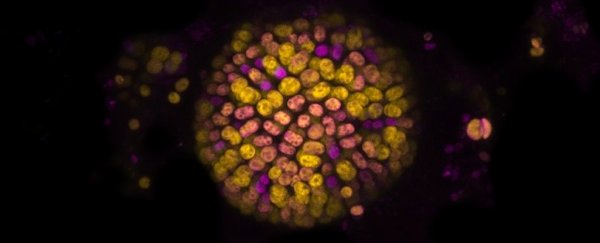A type of chlorophyll discovered just a few years ago is pushing the limits of photosynthesis and the role this new pigment plays.
Fresh research led by Imperial College London has identified a unique mix of biochemistry that not only has interesting applications for life here on Earth, but life on other planets as well.
To construct building blocks of glucose, photosynthetic organisms like plants and cyanobacteria mix carbon dioxide with water and use sunlight to recombine their atoms in Earth's oldest version of Lego.
Converting photons shining down from above into chemical bonds requires the clever use of a protein called chlorophyll-a, which soaks up mostly red flavours of light while reflecting the greens, blues, and purples.
This is what gives plants that ubiquitous green hue.
We've all seen other leaf colours, but it's long been assumed the red part of the spectrum – about 700 nanometres – sets a strict lower limit on the amount of energy it was worth collecting.
Anything longer requires more sensitive photosystems that would risk damage from the wash of more energetic wavelengths. Chlorophyll-a is found in virtually everything that photosynthesises, so the so-called red limit is thought to be universal.
It's even argued that this boundary extends to organisms growing on other worlds, meaning the red limit is widely taken as a useful gauge on the potential for certain worlds to sustain photosynthetic organisms.
That changed in 2013 when a cyanobacterium named Acaryochloris marina was found to possess another type of chlorophyll labelled 'd', which could absorb wavelengths 40 nanometres longer than type a.
This is a pretty specific example, with Acaryochloris marina scraping what light it can by living in the shade of sea squirts. So the search continued for other limit-breaking examples of chlorophyll.
The type-d discovery was shortly joined by chlorophyll-f, a pigment that pushed the size of wavelengths an organism could technically absorb further into the near infrared zone – to over 760 nanometres.
As exciting as it was, chlorophyll-f wasn't thought to be that big a deal, barely making up 10 percent of the light-collecting pigments in photosystems it was found in. It just wasn't thought to contribute much to the organism's overall energy-storing limits.
But now experiments carried out on the extremophile cyanobacterium Chroococcidiopsis thermalis have changed all that.
Grown under normal light conditions the cyanobacterium's absorption and fluorescence don't show anything remarkable.
But when it's put in the shade and fed only infrared, that chlorophyll-f works its magic and runs the show.
"The new form of photosynthesis made us rethink what we thought was possible," says senior researcher Bill Rutherford from Imperial College London.
While chlorophyll-f can soak up low energy wavelengths longer than 760 nanometres, the near infrared/far red photosystem it switches to absorbs slightly more intense light closer to 727 nanometres.
Something very interesting is going on here. One possibility is that by collecting less energy during these shaded periods, the cyanobacterium somehow mitigates the damage caused by variable light conditions.
The process it uses could help develop hardier plants in the future that are capable of making better use of fluctuating light conditions.
This would be perfect for designing oxygen-generating algae and bacteria to assist in terraforming Mars.
"This might sound like science fiction, but space agencies and private companies around the world are actively trying to turn this aspiration into reality in the not-too-distant future," says chemist Elmars Krausz from the Australian National University.
And of course, we can't forget the aliens.
Knowing there is some wiggle room in the red limit could affect the hard line on whether a particular moon or planet might harbour life, if not reveal their presence.
In the words of Imperial College microbiologist Dennis Nürnberg, "It is amazing what is still out there in nature waiting to be discovered."
This research was published in Science.
